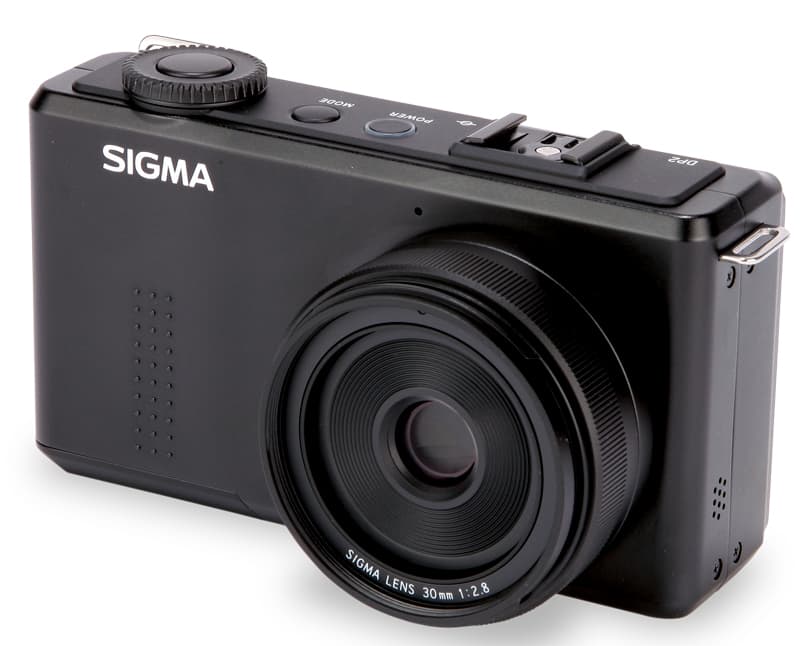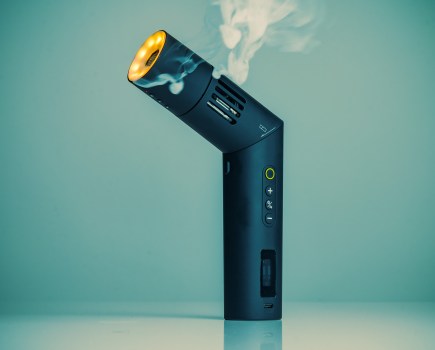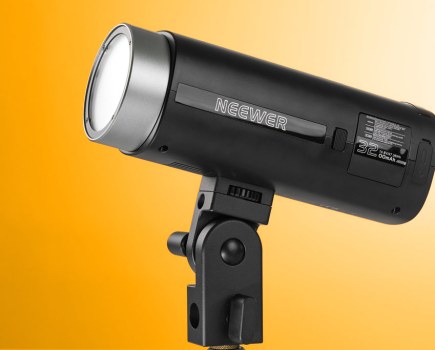Sigma DP2 Merrill at a glance:
- Foveon X3 CMOS APS-C sensor with 44.3 million effective pixels (4704×3136 pixels x3)
- 30mm (45mm effective) f/2.8-16 Sigma lens
- 3in, 920,000-dot LCD screen
- Street price around £799
Sigma DP2 Merrill review – Introduction
We see a lot of new camera kit at the AP office. New features, picture effects and claims of improved performance are the norm. In the Sigma DP2 Merrill, Sigma has created a camera not intended to compete on such terms. Forget features like a touchscreen, fast frame rates or curvy body – it does not offer every feature possible, although many of these do not interest a number of photographers anyway. This is a camera that will, I suspect, often be labelled a ‘purist’s’ digital camera. The Sigma DP2 Merrill has a fixed-focal-length lens, large imaging sensor and simple build. It is designed as a niche photographer’s tool, with the company claiming the ‘best’ image quality on offer.
Features
As with the Sigma SD1 Merrill DSLR, the company claims the DP2 Merrill ‘realises medium-format image capability’. With a 44.3-million-pixel resolution, such claims are, on the surface, believable. What needs to be understood, however, is that all the cameras in the Merrill series feature Sigma’s own unique Foveon X3 sensor. This sensor has separate red, green and blue layers of photoreceptors, each with 14.8 million ‘spatial’ pixels that, when combined, total approximately 44.3 million pixels, not the quoted 46-million-pixel count.
An imaging sensor such as this, which processes each colour light wave in turn rather than combining neighbouring pixels, should in theory give superior colour rendition. However, it also means that light is filtered three times, reducing its brightness and potentially introducing noise. I will explain this in greater detail in the Noise, resolution and sensitivity section. The sensor in use here is an APS-C-format unit, which is impressive for a camera of this size and price.
Like Sigma’s DP1 and DP2 compact cameras, the DP2 Merrill features a fixed-focal-length lens, in this case a 30mm f/2.8 (approximately 45mm f/4 on full frame). This means the lens is ideal for most types of photography, particularly portraits and landscapes. The lens is constructed of eight elements in six groups, and by including one aspherical element and three high-refraction elements, the company claims it has been able to achieve excellent image quality in a compact unit.
The camera comes supplied with Sigma Photo Pro, the company’s own raw-processing package. At the time of writing, the X3F raw files are not compatible with software such as Adobe Lightroom, so the files in this test have been processed using the frustratingly slow Sigma software.
Beyond the core of the camera, there is little to write about. This is not a camera for those who want a number of shooting modes and picture effects, but one designed to please photography ‘purists’. The processing power of the camera is not sufficient enough for anything beyond a five-frame raw & JPEG burst, with the files taking just under a minute to be processed.
Build and handling

It may be classed as a compact camera, but by today’s standards the DP2 Merrill is both sizeable and weighty. It is not a true pocket camera, especially given that its measured depth is approximately 60mm, including the fixed lens. First impressions of the design are of a somewhat dated and understated camera, with few controls on the body and a plain black shell. I would like to see this chunky block a little smaller, but after some use I happen to rather like it.
There are few frills on the DP2 Merrill, but thankfully some thought has gone into accessing the key exposure controls. The top-plate is dominated by a large command dial, which is used to scroll through menus, to adjust exposure and magnify an image in playback. In line with the four-way D-pad, the dial changes the settings in the quick menu, which contains up to four user-defined controls. The dial is central to navigating the camera, and operates both speedily and intuitively. Next to the dial is the shooting mode button, which includes three custom modes, the usual PASM options and the video function.
It does not take long to work around the camera’s body and its menus, for it is a simple photographer’s tool – and this is a refreshing thing. Photographers will appreciate the quick start-up time of less than 2secs from pressing the power button to being ready to shoot.
Disappointingly, though, given the size of the camera, the DP2 Merrill does not include a built-in flash or viewfinder. Both can be purchased as separate units and attached via the hotshoe port.
The camera comes supplied with two low-capacity batteries. Unfortunately, this is not the sign of a considerate manufacturer, but is instead due to the battery life being so poor, to the point that it would be helpful if Sigma threw in another.
White balance and colour

Image: Skin tones are spot-on in this portrait taken indoors
Once the behaviour of the camera is understood, it is possible to achieve excellent colours straight out of the DP2 Merrill. It has seven colour modes, although black & white and sepia are only available when shooting JPEGs. The standard colour mode has a relatively neutral colour rendition, but this is far and away preferable to the overly saturated look offered by many other cameras, which can leave a ‘digital’ impression. Of course, greater vibrancy can be introduced to images using the vivid colour mode or by manually adding it post-capture using editing software.
I found that in all but a handful of situations I could rely on the auto white balance setting. As I would expect of this camera, recording a custom white balance reading for tricky scenes is a quick process. Overall, skin tones are excellent straight out of the camera, making the DP2 Merrill ideal for portrait work. Landscape photographers should note that the blues of a sunny sky can be a tad on the cyan side and will benefit from a post-capture tweak. Otherwise, in good light, images generally have an impressively ‘authentic’ film feel.
Metering
Like most cameras, the DP2 Merrill features evaluative, spot and centreweighted metering modes. However, I would like to see the spot metering selectable over a large portion of the frame rather than just the centre. As such, the auto exposure lock (AEL) button becomes an important tool. Once the scene has been metered, the AEL button can be pressed to keep that exposure even when recomposing the frame. To record a different reading, AEL needs to be deactivated again.
Alternatively, a half-press option can be selected, so that the reading is only kept as long as the shutter button is half pressed. In the evaluative metering mode, there are few surprises in the way the camera meters for a scene, with a bias towards maintaining highlight detail over shadows. For print-ready images straight out of the camera, it can therefore be worthwhile dialling in up to +0.7EV exposure compensation.
Autofocus
Although images are sharp, it can take time for the DP2 Merrill to focus. The camera offers one selectable central AF point only, which even in good light requires a quick ‘hunt’ before it locks onto the point of focus. In low-contrast light, the speed is slowed down further and the camera often does not achieve successful focus at all.
The camera’s saving grace is its manual focus functionality, controlled using the focus ring on the lens. It overrides autofocus in the AF/MF option, and in the MF setting a focus distance indicator appears on screen. With the shutter button half-pressed, focus magnification is activated once the focus ring is adjusted. So, for static and slow-moving subjects, manual focus is best.
LCD, viewfinder and video
The rear of the DP2 Merrill is dominated by its 3in LCD screen. It has a resolution of 920,000 dots and a good viewing angle. However, I found that its output is not as bright as other similar screens, and its colour rendition lacks the ‘punch’ of the final image results. Furthermore, it picks up smudges easily, which can in turn compromise viewing the screen in bright light.
There is no viewfinder built into the camera, but the company’s VF-21 optical viewfinder can be attached to the camera via the hotshoe port. While video is possible with the DP2 Merrill, it is more of an afterthought, being only 480p VGA format.
Noise, resolution and sensitivity

These images show 72ppi (100% on a computer screen) sections of images of a resolution chart, captured using the lens set to its optimum f/5.6 aperture. We show the section of the resolution chart where the camera starts to fail to reproduce the lines separately. The higher the number visible in these images, the better the camera’s detail resolution at the specified sensitivity setting.
Most cameras use a Bayer pixel filter arrangement, which has its red, green and blue pixels on a single ‘layer’. Establishing the ‘true’ resolution of a X3 Foveon sensor is complicated in relation to a Bayer pixel arrangement, but in our in-depth investigation of the sensor in AP 8 October 2011, we ascertained that the equivalent resolution as we would understand it is around double the ‘spatial’ pixel count. This means that although the maximum output is 4704 x 3136 pixels and print size is approximately 15.7×10.5in, the DP2 Merrill’s ability to resolve detail is roughly equivalent to a 30-million-pixel Bayer sensor.
Without a doubt, then, the single most outstanding aspect of this camera is its image quality in good light. Images taken at ISO 100 in these conditions contain a class-leading level of detail, up to the 32 marker in our resolution charts. In fact, there is some detail all the way to the end the charts. It is moiré patterning – which suggests a weak anti-aliasing filter – that has at times a dramatic impact on the camera’s performance in our resolution charts and stops it from scoring even higher. In real-world images, detail is crisp, thanks in part to the fixed 45mm (effective) lens, and requires little sharpening post-capture.
As I mentioned in the introduction, the design of the Foveon X3 sensor compromises the degree of light it can use, and as such its ability to handle noise is, by today’s standards, poor. Images up to ISO 200 are largely unaffected, but luminance noise becomes apparent in images at ISO 400, obvious at ISO 800 and distracting above ISO 1600. Unprocessed raw files shot at ISO 3200 and 6400 show a high level of chroma noise, too. With this in mind, I would like to see optical image stabilisation included, which would allow the use of lower ISO settings in more situations.

Image: It is clear that to get the most out of the DP2 Merrill, it is essential to shoot in raw format. This is especially the case in low-light scenes like this. The detail in midtones is much patchier and prone to chroma noise in the JPEG file, while a raw file with noise reduction applied is much crisper
Dynamic range
Looking over my images, it is clear that the DP2 Merrill is capable of capturing a wide range of tones, and holds its own against the competition. Detail in some highlights is not always retained, such as the shine on skin in a portrait or sunlit white clouds in a landscape, but this is not unusual for a camera at this level. In fact, the camera’s evaluative metering looks to maintain highlight detail anyway, so this is less of an issue.
The main concern, however, is that detail in shadow areas is noisy in any setting above ISO 200, so there is less scope to bring back underexposed images and keep them looking ‘clean’. The camera does not feature an HDR mode, but auto bracketing over three frames is possible, although a tripod is necessary to use this shooting mode effectively.
Our verdict
It is clear that Sigma has created a niche camera in the DP2 Merrill. For its intended audience, the
camera works very well indeed. In good-contrast light, I have not seen such a high standard of performance from a camera at this level, and the DP2 outperforms many cameras above it, too. Furthermore, its handling when using the command dial is intuitive. However, this is not a camera for those wanting responsive autofocus, fast processing, good low-light performance or a vast feature set. It is simply a photographer’s tool, and for that Sigma is to be commended.








